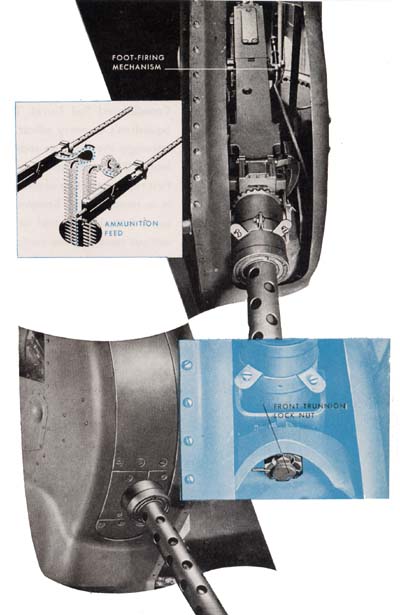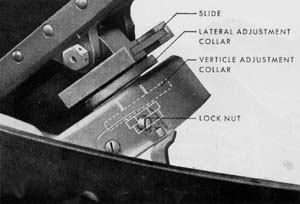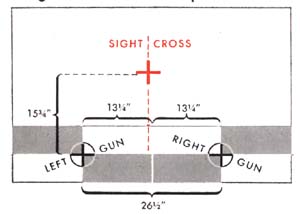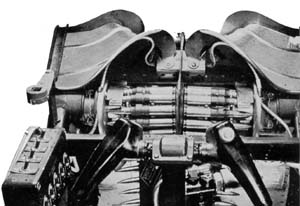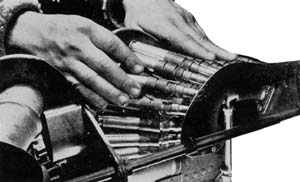On the left side of the control panel you see another switch all by itself,
marked pump motor switch (C). Raise this to the on position. Lift
the little red plastic cover on the right side of the control panel and flick
the gun-end-sight switch (D) to the on position. The control
handles are located below and back of the breast plate in which the control
panel is mounted.
To start the pump motor use the bottom edges of your hands
to press down the two safety switches. When the motor is running, the handles
will automatically go to neutral position. For this reason it is best to press
the safety switches down before grasping the hand grips of the control handles.
If this is done, the control handles will move to the neutral position without
moving the turret. If the control handles are in any other position than neutral
and the safety switches are closed, the turret will start, causing immediate and
violent action. Either safety switch will operate the turret.
Depressing the
safety switches also turns on the sight and provides power to the booster
motors so that they will operate when the guns are fired.
To adjust the
brightness of the sight to light conditions use one hand to hold the control
handles, keeping the safety switch depressed, and turn the rheostat on the sight.
To operate the turret turn the control handles in the direction you desire
the turret to move. For azimuth (right or left) the control handles are operated
exactly like those of a bicycle. For elevating the guns move the upper part of
the control grips backward; and for depressing the guns, move the top portion
of the control handles forward. Don't jerk the controls—move them smoothly
and deliberately. | 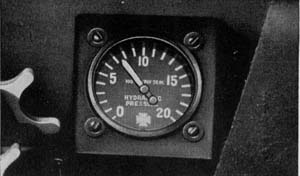
Above
the control panel, and right center, is the high pressure gauge. As soon
as the pump is operating, check to see if it reads the desired 750 lbs.
pressure. While operating the turret, from time to time check this gauge to see
that the proper pressure is maintained. Right under your index finger on both
control handles are the triggers. Either trigger will fire both guns.
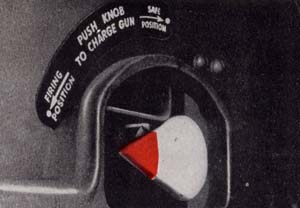
Next
to your left knee is the hydraulic gun charger control knob, which operates
the gun chargers located on the inboard side of each gun. To charge the guns turn
the control knob to the Firing position. Depress the control knob sharply.
Both guns will be charged at once and ready to fire. If the control knob is turned
to Safe before depressing, the gun bolts will remain in the retracted position,
which provides access TO remove a jam.

|
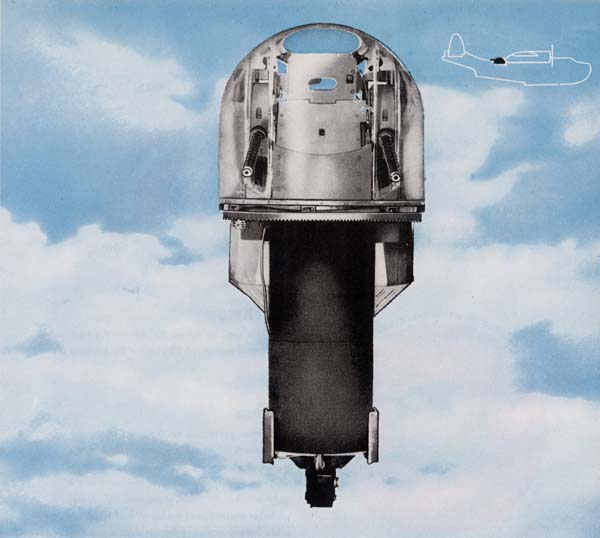
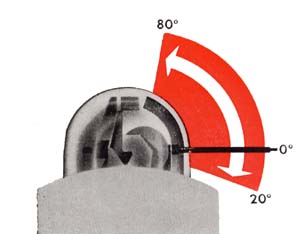
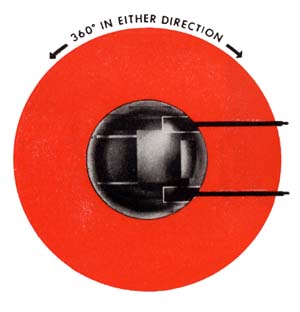
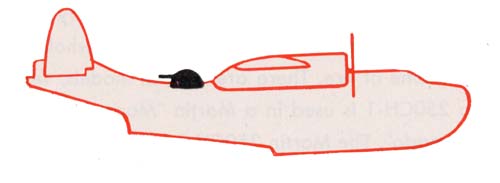
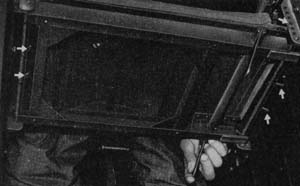
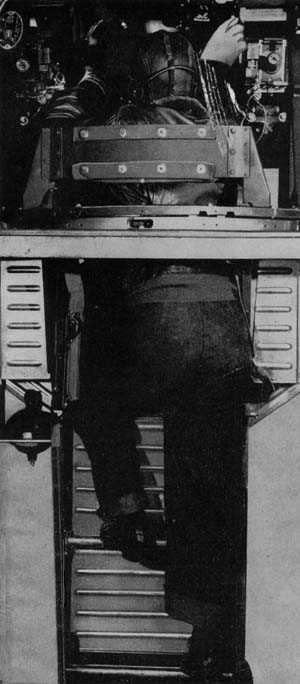
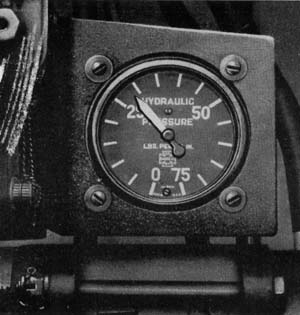






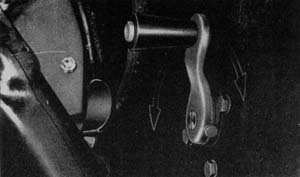

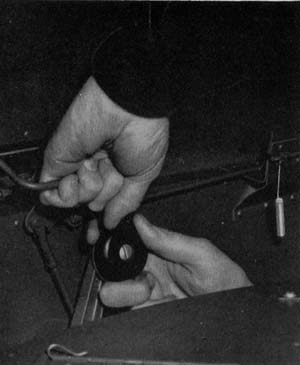
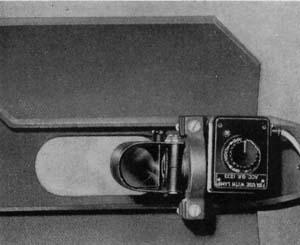
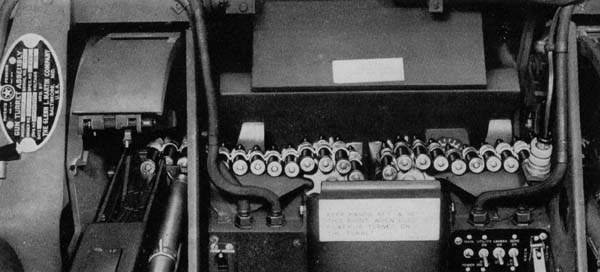
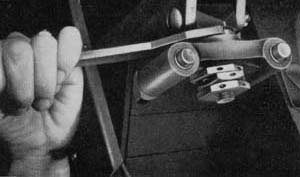

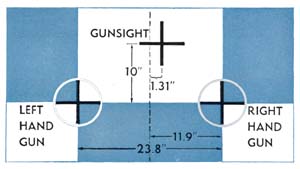
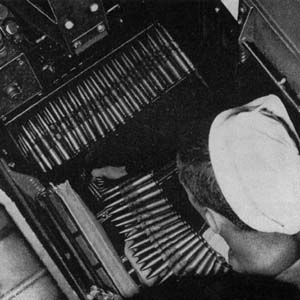
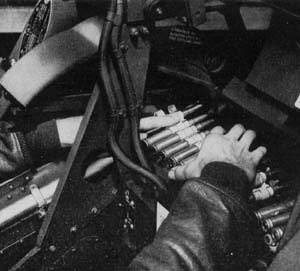
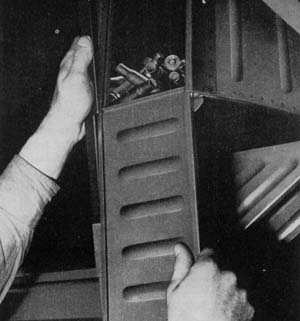
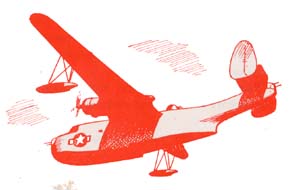

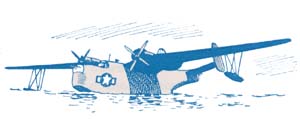
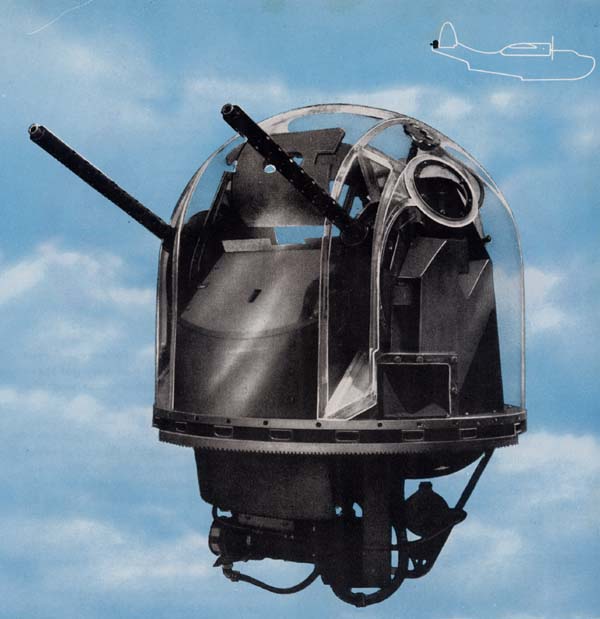
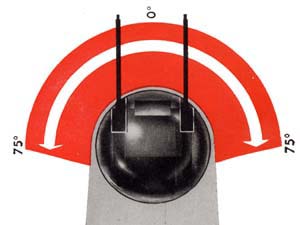
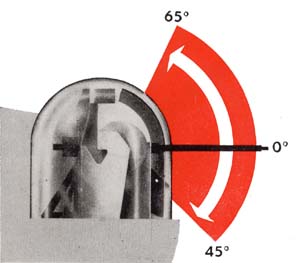

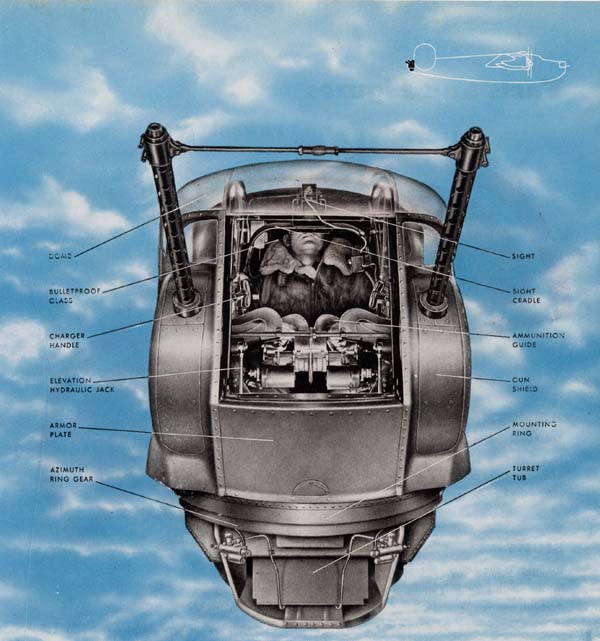
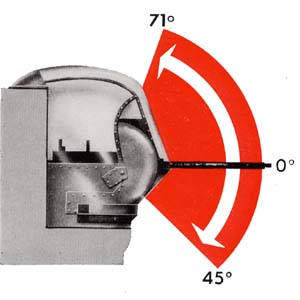
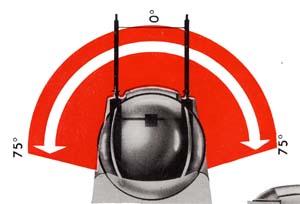
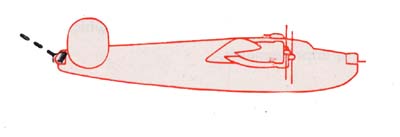
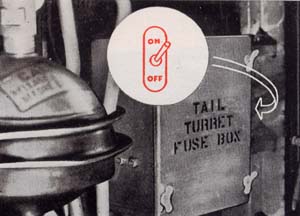
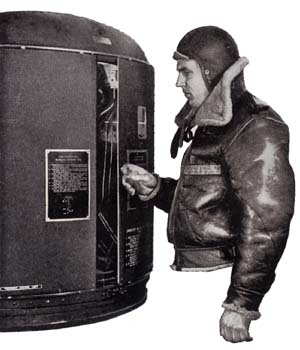
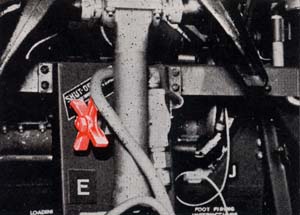
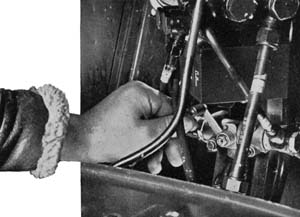


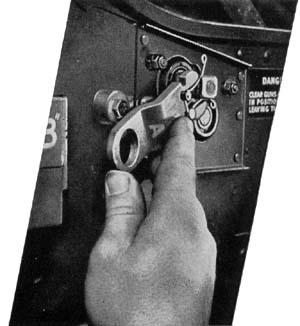
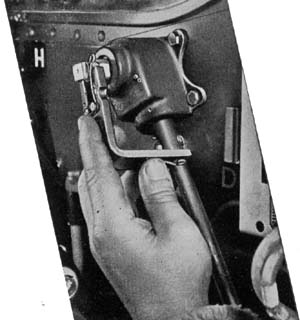
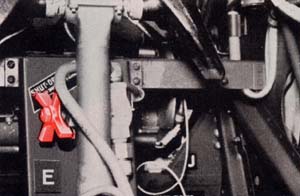
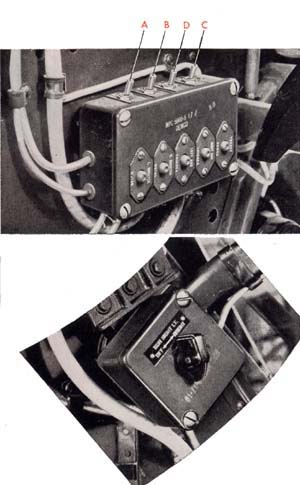

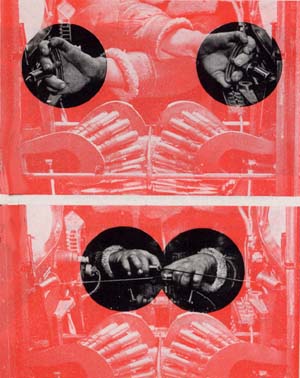

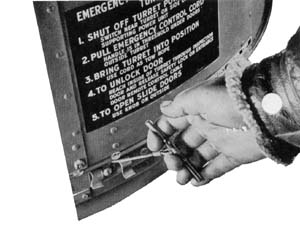
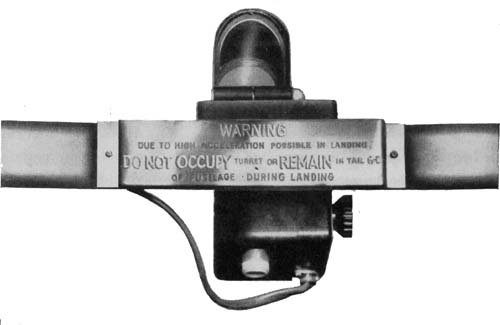 \
\